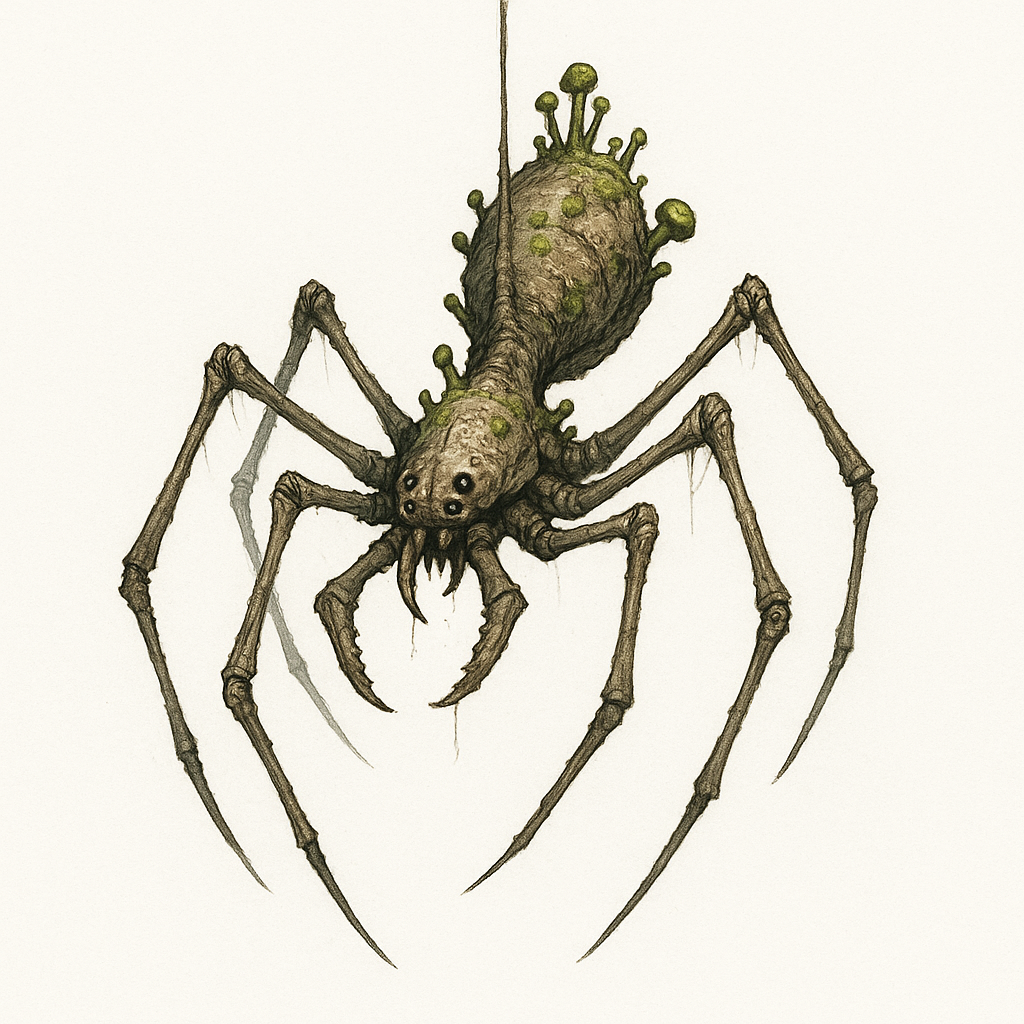Draskii Sporespinner
Draskii Sporespinner
Biological Profile
Scientific Name
Mycothelis draskii
ClassificationWeb-Casting Fungivore (Mycoarthropoid Hybrid)
KingdomFungi/Animalia (chimeric lineage)
PhylumMycoarthropoda (synthetic clade)
ClassArachnoformis
OrderSporosuspensida
FamilyDraskiinidae
HabitatSewer rafters, pipeline ceilings, derelict superstructures
RangeHigh-humidity collapse zones, bio-waste corridors of Thauzuno
Physical Characteristics
Leg Span
0.8–1.1 m
Body Length0.3–0.4 m
Weight~2.3–3.1 kg
Body CompositionSemi-exoskeletal frame overgrown with symbiotic fungal tissues
ColorationPale gray to mossy green with spore-node highlights
Distinctive FeaturesSilk-emitting spinnerets, fungal growths on dorsal thorax, spore-sacs
Physiology & Systems
Respiration
Aerobic with auxiliary fungal gas exchange (sporophores)
Feeding MethodAbsorption via enzymatic external digestion and fungal substrate lysis
Web CompositionCorrosive protein-polymer threads; reactive with synthetic fabrics
Defensive EmissionPsycho-reactive gas; effects include vertigo, hallucinations, panic
Environmental ToleranceFunctions between 5°C and 43°C; prefers high-moisture decay zones
Behavior & Lifecycle
Reproductive Mode
Aerial spore-fertilization; clustering in shared filament colonies
Activity CycleCrepuscular; peak silk casting at night or in low-EM fields
Colony StructureLoosely communal; nests form web-fused fungi-masses
Lifespan6–9 months (individual colony nodes persist for years
Threat ResponseEmits defensive gas, then retreats into upper infrastructure vents
Ecological Role
Trophic Level
Detritivore-fungivore; secondary trap predator
DietFungal mats, chemical mildew, decomposed fauna, ensnared scavengers
Environmental ImpactStabilizes fungal biomes; dangerous to surface operations
Utility to Vey’ZariNeurotoxin harvesting, spore hallucinogen synthesis, silk derivative research
Containment AdvisoryAvoid filament clusters and web-nests in moisture-compromised infrastructure. Exposure to active gas clouds requires Class-3 respirator and immediate withdrawal. Sporespinner colonies should be flagged for chemical reclamation or neurotoxin harvest ops only by certified guilds.




Comments